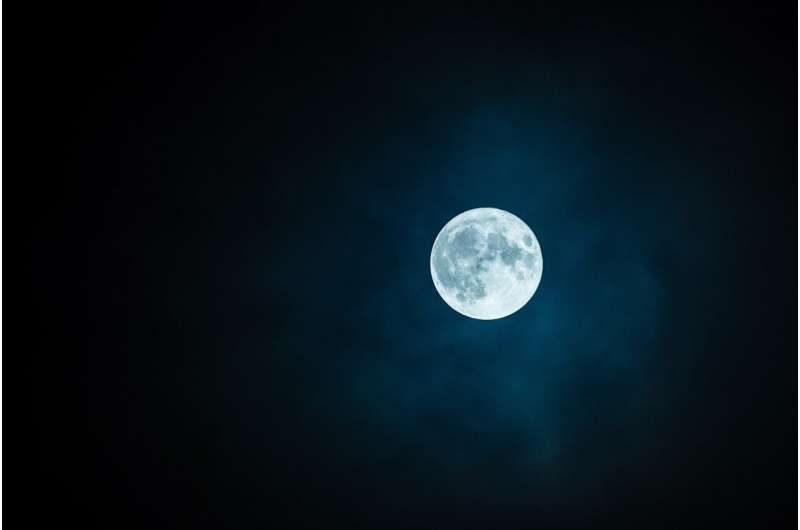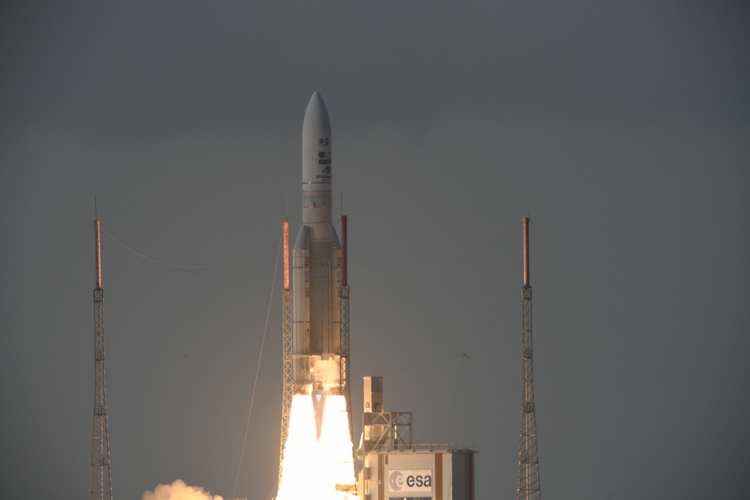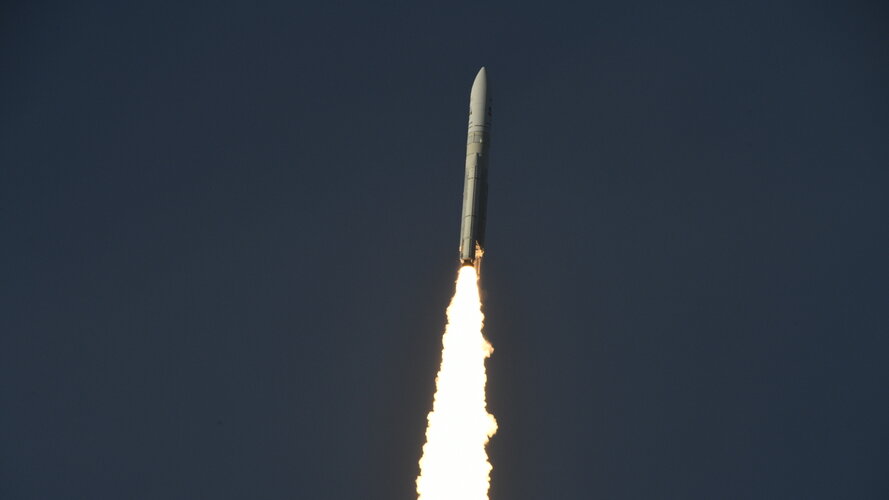
Copernical Team
With success of Artemis I, when will NASA fly Artemis II?

With Orion safe back on Earth, the last and most important tests of the Artemis I mission have been completed, but there are still miles to travel and months of data sifting to go before NASA will target an Artemis II launch date.
While the latest announced timeline for that flight is no earlier than May 2024—only 18 months away—NASA officials after Sunday's successful landing kept referring a two-year turnaround between Artemis I and II, which would put its launch closer to the end of 2024.
"I think one thing we've always been concerned about is, what do we learn from [Artemis I] and are there changes we have to make? I think we've learned a lot," said Jim Free, NASA's associate administrator for the Exploration Systems Development Mission Directorate during a post-landing press conference Sunday.
"We obviously want to try to do it quicker," Free said, and pointed out the Orion team is "always looking to ways to do things quicker. We're trying to roll in lessons learned from the processing of the Artemis I vehicle at Kennedy. Are there things we can shorten there? Optimize? So that's all of our lessons learned path going forward.
NASA’s Big 2022: Historic Moon Mission, Webb Telescope Images, More
 2022 is one for the history books as NASA caps off another astronomical year.
2022 is one for the history books as NASA caps off another astronomical year. Europe’s all-new weather satellite takes to the skies
 Image:
Europe’s all-new weather satellite takes to the skies
Image:
Europe’s all-new weather satellite takes to the skies MTG-I1 lifts off
 Video:
00:03:33
Video:
00:03:33
The first Meteosat Third Generation Imager (MTG-I1) satellite lifted off on an Ariane 5 rocket from Europe’s Spaceport in French Guiana on 13 December at 21:30 CET.
From geostationary orbit, 36,000 km above the equator, this all-new weather satellite will provide state-of-the art observations of Earth’s atmosphere and realtime monitoring of lightning events, taking weather forecasting to the next level. The satellite carries two completely new instruments: Europe’s first Lightning Imager and a Flexible Combined Imager.
MTG-I1 is the first of six satellites that form the full MTG system, which will provide critical data for weather forecasting over the
A new era of weather forecasting begins

The Meteosat Third Generation Imager satellite, set to revolutionise short-term weather forecasting in Europe, lifted off on an Ariane 5 rocket at 21:30 CET (17:30 local time in Kourou) on 13 December from Europe’s Spaceport in French Guiana. Its solar panels deployed just over 75 minutes later.
Sound of a dust devil on Mars recorded for first time
 The sound of a dust devil on Mars was recorded for the first time as the eye of the whirlwind swept over the top of NASA's Perseverance rover, a new study said Tuesday.
"We hit the jackpot" when the rover's microphone picked up the noise made by the dust devil overhead, the study's lead author Naomi Murdoch told AFP.
The researchers hope the recording will help to better understand the
The sound of a dust devil on Mars was recorded for the first time as the eye of the whirlwind swept over the top of NASA's Perseverance rover, a new study said Tuesday.
"We hit the jackpot" when the rover's microphone picked up the noise made by the dust devil overhead, the study's lead author Naomi Murdoch told AFP.
The researchers hope the recording will help to better understand the US researchers announce historic nuclear fusion breakthrough
 US researchers announced a historic nuclear fusion breakthrough on Tuesday, hailing a "landmark achievement" in the quest for a source of unlimited, clean power and an end to reliance on fossil fuels.
The Lawrence Livermore National Laboratory (LLNL) in California said an experiment it conducted this month "produced more energy from fusion than the laser energy used to drive it."
The US
US researchers announced a historic nuclear fusion breakthrough on Tuesday, hailing a "landmark achievement" in the quest for a source of unlimited, clean power and an end to reliance on fossil fuels.
The Lawrence Livermore National Laboratory (LLNL) in California said an experiment it conducted this month "produced more energy from fusion than the laser energy used to drive it."
The US Artemis I: liftoff to splashdown
 Video:
00:01:11
Video:
00:01:11
The uncrewed Artemis I test flight saw Orion travel around the Moon and farther than any spacecraft designed to carry humans and return them to Earth. Artemis is the international lunar exploration programme that is taking humankind to the Moon. This first mission provided a first test of both NASA’s Space Launch System (SLS) and the Orion moonship that was propelled by the European Service Module’s 33 engines beyond the Moon and into deep space. Future European Service Modules will provide electricity, propulsion and cabin thermal control for astronauts on lunar missions as well as breathable atmosphere
Poland's only cosmonaut, who circled Earth in 1978, has died

Poland's only cosmonaut, Gen. Miroslaw Hermaszewski, who circled the Earth in a Soviet spacecraft in 1978, has died. He was 81.
The retired air force pilot's death on Monday was announced via Twitter by his son-in-law, European Parliament member Ryszard Czarnecki. He later told Polish media outlets that Hermaszewski died at a hospital in Warsaw of complications from a surgery he had undergone in the morning.
"On behalf of the family, I'm confirming the very sad news about the death of Gen. Miroslaw Hermaszewski," Czarnecki tweeted, calling him a "great pilot, good husband and father, and much beloved grandfather."
Hermaszewski became a national hero thanks to his trip to space. For nine days in June and July of 1978, Hermaszewski and Soviet cosmonaut Pyotr Klimuk circled the Earth in the Soyuz 30 spaceship that docked at the Salyut 6 orbital space station. They went around the globe 126 times.
In an 2018 interview with the Polish newspaper Rzeczpospolita, Hermaszewski said his biggest fear during the flight was that their spacecraft would be struck by a meteor. His and Klimuk's senses were sharpened, catching even the smallest sound, he said.
Orion splashes down in Pacific Ocean after trip around the moon
 NASA's Orion capsule, after traveling 1.4 million miles through space, including orbiting the moon and collecting data, returned to Earth on Sunday.
The 25 1/2-day Artemis I mission landed in the Pacific Ocean off Mexico's Baja California at 12:40 p.m., NASA reported.
"Splashdown! From Tranquility Base to Taurus-Littrow to the tranquil waters of the Pacific, the latest chapter of
NASA's Orion capsule, after traveling 1.4 million miles through space, including orbiting the moon and collecting data, returned to Earth on Sunday.
The 25 1/2-day Artemis I mission landed in the Pacific Ocean off Mexico's Baja California at 12:40 p.m., NASA reported.
"Splashdown! From Tranquility Base to Taurus-Littrow to the tranquil waters of the Pacific, the latest chapter of 
